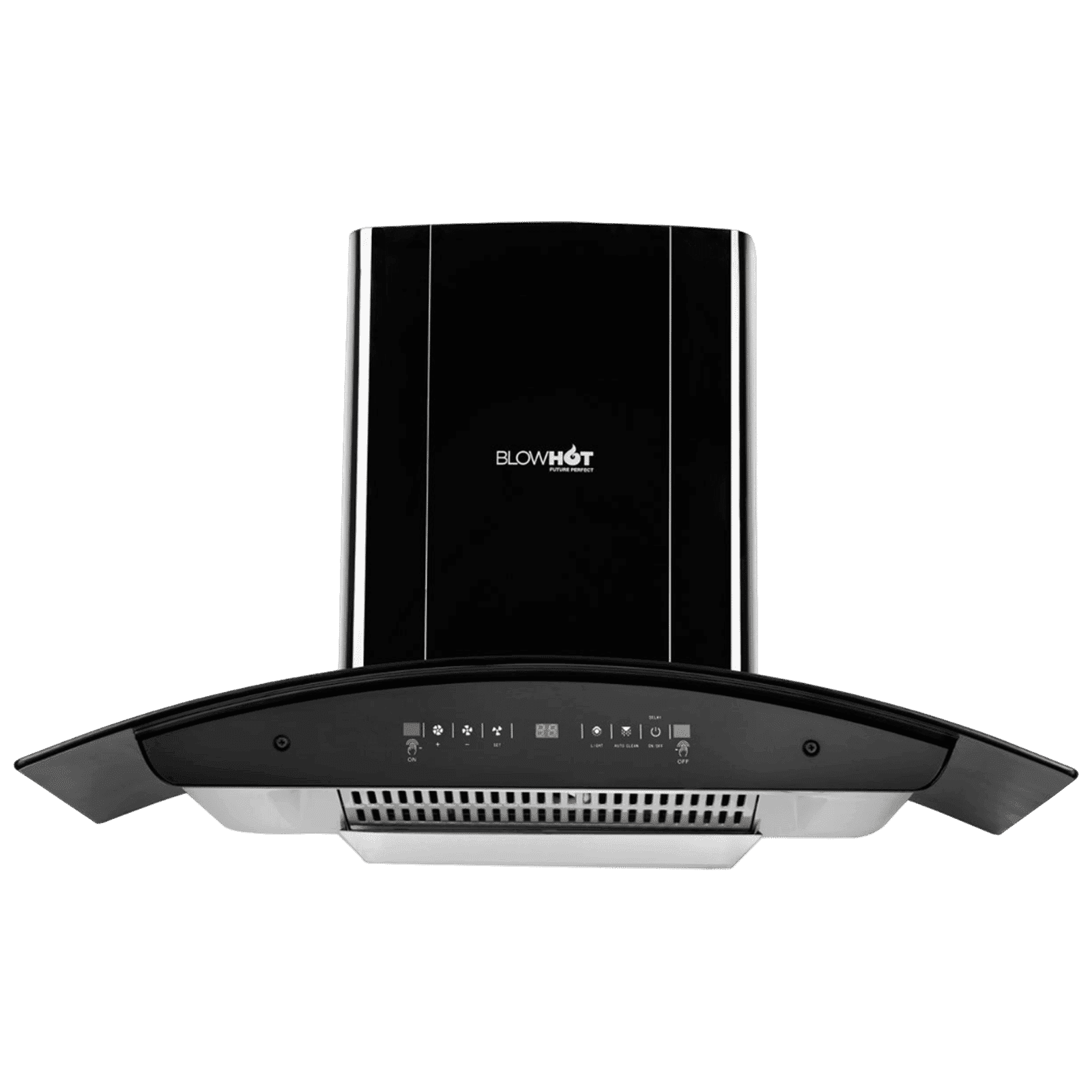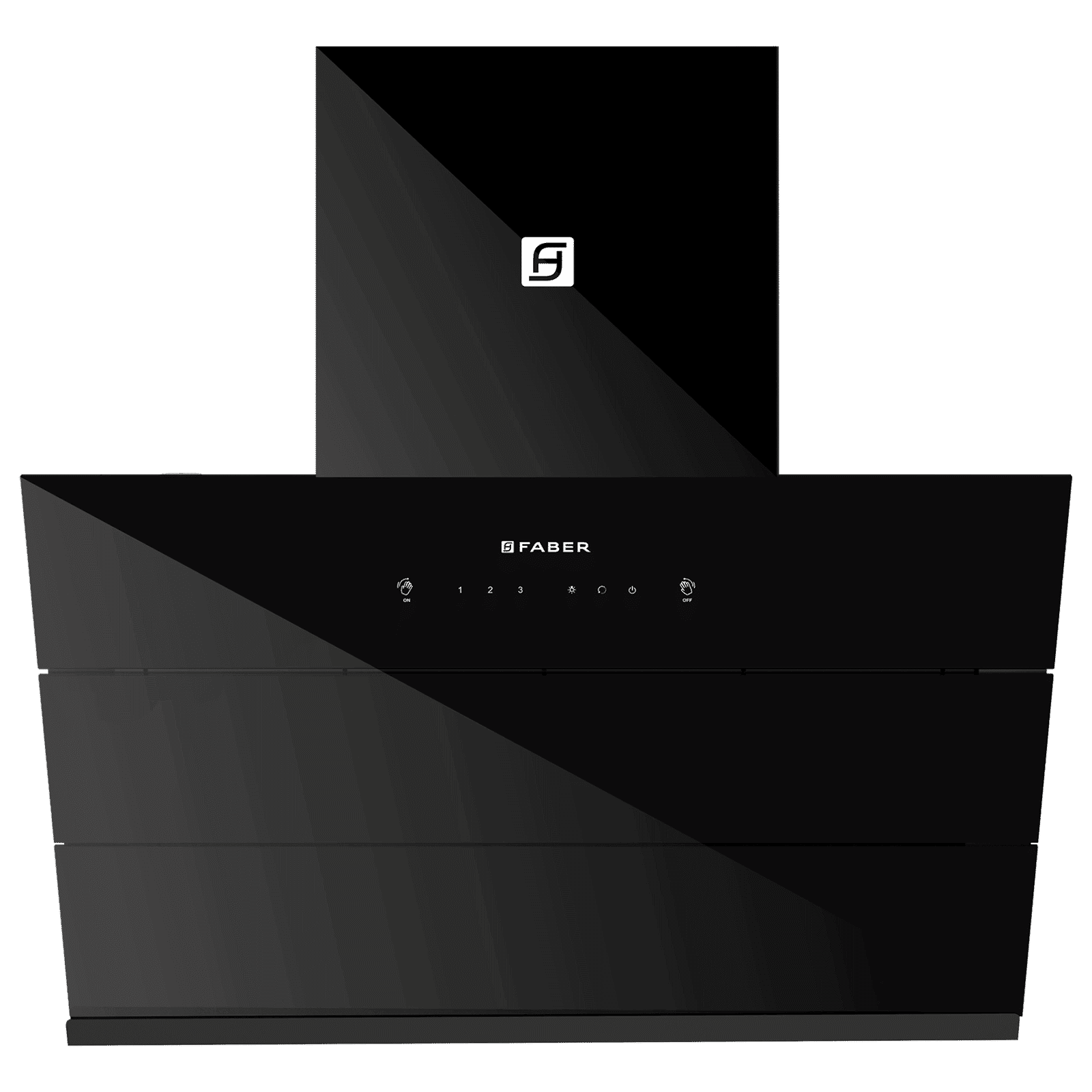
Home Appliances
•05 min read

Buy BLOWHOT ERICA TAC MS PLUS 90cm 1450m³/hr Ductless Auto Clean Wall Mounted Chimney with Motion Sensor (Black) online at best prices from Croma. Check product details, reviews & more. Shop now!
Ever wondered why chimney height matters so much? From ensuring proper airflow to meeting essential regulations, the right chimney height makes all the difference in your home’s safety and operational efficiency. In this article, you will learn everything from understanding the basics of chimney height to the installation tips that help achieve an optimal chimney system. We explore everything from chimney height regulations, clearance requirements to the science behind the interplay of height and airflow.
Chimney height refers to the vertical measurement from the base of your chimney to its top. This measurement is crucial because it directly impacts the draft, or the upward flow of air through the chimney. A proper draft not only ensures efficient removal of smoke and gases but also contributes to the safe operation of appliances like wood stoves and fireplaces. In essence, the correct chimney height is essential for maintaining efficient performance and reducing the risks of buildup and potential hazards.
The relationship between chimney height and airflow is rooted in physics. When a chimney is sufficiently tall, it creates a significant difference in temperature between the cooler external air and the hot gases inside. This temperature gradient helps generate a strong draft. As a result, the greater the chimney height, the better the airflow – up to a certain optimal limit. This is why understanding your chimney height is key to balancing efficiency with safety.
To ensure safety and optimal performance, many regions enforce guidelines for chimney height. One of the most recognized guidelines is the 3-2-10 rule, where the chimney must extend at least 3 feet above the roofline and 2 feet higher than any structure within a 10-foot radius. Such chimney height regulations safeguard against backdrafts and ensure proper ventilation, helping to protect both the structure and its occupants.
Different appliances may require varying chimney heights. For instance, a wood stove typically calls for a minimum chimney height of around 12 feet, ensuring that it adheres to the required minimum chimney height criteria while achieving efficient draft. However, determining the ideal chimney height involves more than just meeting minimum standards. Factors such as the placement of the appliance, local regulations, and the overall design of your home contribute to achieving an optimal chimney height for improved safety and performance.
Clearance requirements around chimneys are equally important and are designed to prevent fire hazards. This includes maintaining sufficient distances between the chimney and nearby roofs, walls, or other structures. Incorrect measurements or placement can lead to dangerous overheating and even structural damage. By adhering to established chimney clearance requirements, you mitigate these risks and ensure your chimney’s safe function.

Buy FABER HOOD ZENITH FL HC SC BK IN 75cm 1400m3/hr Ductless Auto Clean Wall Mounted Chimney with Odor Sensor (Black) online at best prices from Croma. Check product details, reviews & more. Shop now!
Choosing the right location for your chimney is vital. When planning the installation, consider factors such as the surrounding buildings, roof design, and even nearby kitchen chimneys or outdoor installations. A well-placed chimney not only meets height and clearance regulations but also maintains the aesthetic appeal of your home. For example, on modern homes where express delivery and seamless integration are valued, a strategically placed chimney marries safety with design. Using a chimney installation guide can help ensure that every measure—from distance to height—is precisely calculated.
Calculating your chimney height may seem daunting, but following a straightforward approach can simplify the process. Begin with the 3-2-10 rule: measure 3 feet above where the roofline ends, and ensure that the chimney is at least 2 feet taller than any object within a 10-foot radius. For instance, if you have a nearby roof peak that is 20 feet high, your chimney should be at least 22 feet tall. Many homeowners and contractors now use specialized chimney height calculators to check whether the design meets both performance and regulatory demands.
Common mistakes when installing a chimney include underestimating the clearance from nearby structures and failing to adjust the chimney height in accordance with the actual layout of the roof. These mistakes can result in poor draft, creosote buildup, or even more severe structural issues. Ensuring a meticulous approach during installation means adhering to both safety norms and the practical aspects of chimney height for airflow. It is always recommended to double-check measurements and use expert guidance when available.
Pro Tip: Did you know that improper chimney height can lead to poor draft and increased creosote buildup? Ensuring your chimney meets the 3-2-10 rule is key to safe and efficient operation.
One common question is whether a taller chimney design is inherently better than a shorter one. While a taller chimney can generate a stronger draft by creating a greater temperature gradient, it might also require additional support structures to maintain stability. In contrast, a shorter chimney may be easier and less expensive to install but could compromise performance when it comes to optimal airflow. Ultimately, finding the right balance between height and functionality is critical.
A well-designed chimney should not only function properly but also complement your home’s style. Modern building practices allow for a blend of safety, efficiency, and aesthetics. Whether installed for a kitchen or as a focal point in living areas, integrating the right proportions and materials is key to achieving an elegant yet efficient chimney system. The focus should be on balancing chimney height, clearances, and design to create a harmonious structure that supports both function and beauty.

Buy elica SPT MAX FL 900 BLDC 90cm 1500m3/hr Ducted Auto Clean Wall Mounted Chimney with Motion Sensor Control (Black) online at best prices from Croma. Check product details, reviews & more. Shop now!
Beyond the basic calculations, several advanced tips can ensure optimal performance. Regularly inspect and adjust for any factors that may impact chimney height and clearance over time. Seasonal changes, such as snow accumulation or structural renovations, may require you to re-evaluate your chimney’s measures. A vigilant homeowner using the latest chimney installation guide techniques can avoid unexpected issues and maintain high efficiency throughout the year.
The proper chimney height depends on its placement and the appliance it serves. Typically, following the 3-2-10 rule ensures proper draft and safety.
A taller chimney generally produces a stronger draft, enhancing airflow. However, it might require extra structural support, so balance is essential.
Chimneys exceeding 15 feet often require additional bracing or structural support as per local guidelines.
A wood stove typically demands a minimum chimney height of around 12 feet, ensuring adherence to the 3-2-10 rule for safe draft.
Use the 3-2-10 rule as a guide: the chimney should extend 3 feet beyond the roofline and be 2 feet higher than any adjacent structure within a 10-foot radius.
Chimney height plays a crucial role in ensuring proper airflow, maintaining safety standards, and optimizing appliance performance. Understanding the principles behind chimney height and using a comprehensive chimney installation guide can help you navigate regulations, design considerations, and installation challenges with confidence. By applying these expert tips, you can achieve a system that not only meets chimney height regulations but also enhances your home’s efficiency and stability. With thoughtful planning and adherence to guidelines, any homeowner can balance technical requirements with aesthetic appeal, much like choosing quality products that ensure a smooth and rewarding shopping experience.